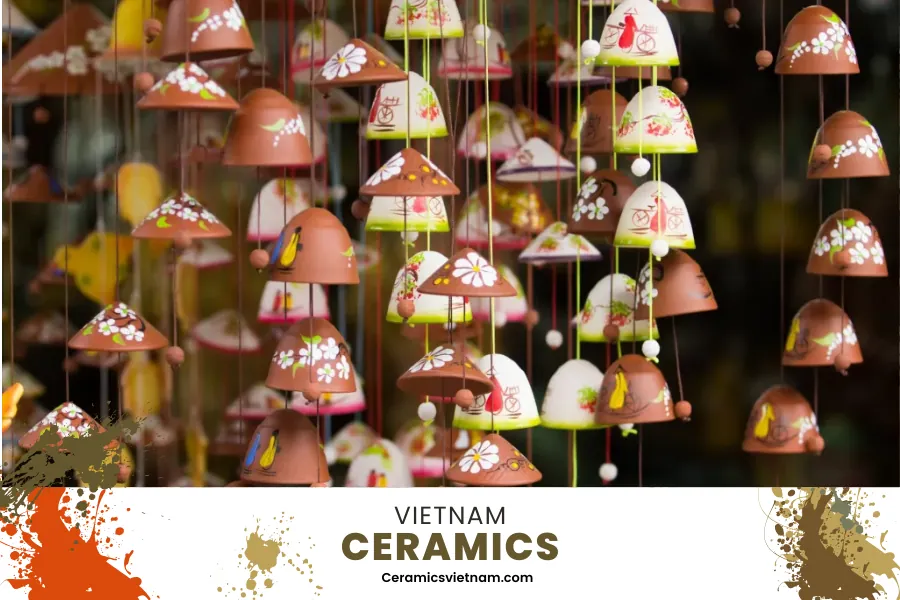Bat Trang Pottery Village is located on the left bank of the Red River, now part of Bat Trang Commune, Gia Lam District, Hanoi, about 10 km southeast of the city center. It is a traditional craft village famous for its ceramic and pottery products.
The Red River, also known as Cai River, Ca River, Thao River, Nhi Ha, Nhi Ha River, is a waterway with a total length of 1,149 kilometers. It originates in Yunnan, China, flowing through northern Vietnam and eventually emptying into the Gulf of Tonkin. Within Vietnam, its length is 556 kilometers. This river holds significant cultural importance for Vietnam’s wet rice civilization.
This craft village was formed during the time of the Ly Dynasty. In his work “Dư địa chí,” Nguyen Trai emphasized that the village’s products were selected as tributes to China. Despite more than 500 years of history with various ups and downs, the name Bat Trang still exists and continues to develop until now.
Let’s explore some surprising facts about this 500-year-old pottery village!

Interesting facts about Bat Trang Pottery Village
Founders of Bat Trang Pottery Village According to historical records, this traditional craft village was established in the 14th – 15th centuries during the Ly Dynasty. The birth of Bat Trang Pottery Village is attributed to five renowned pottery lineages, including Tran, Vuong, Nguyen, Le, and Pham, who migrated from Bo Bat Pottery Village in Ninh Binh province to Thang Long Imperial Citadel to develop their craft. These five lineages collaborated to produce pottery, laying the foundation for Bat Trang Pottery Village.
A Village without Fields Bat Trang is unique as a Vietnamese village without fields. This peculiarity is due to its location outside the dyke, where there was only the riverbank, and when the riverbank eroded, there was no arable land left. As a result, the villagers primarily engaged in pottery making, trading in betel nuts, and fish sauce production.
For burials, the village had to borrow land from neighboring villages since it lacked its own burial grounds. The current cemetery of the village is located in Thuan Ton hamlet, Da Ton commune, Gia Lam district. The village also deviates from the tradition of tomb sweeping during the Qingming Festival but instead conducts it on the 6th day of the first lunar month when descendants return home for the Tet holiday.
A Village without Bamboo Despite being a Vietnamese village, Bat Trang doesn’t have a single bamboo plant used for making fences. This absence is due to the limited space, high population density, and the availability of Bat Trang ceramics. Consequently, the walls of houses in the village are constructed using Bat Trang ceramics, even the ones erected vertically.
The village is also unique for not having thatched houses. This is because during the kiln-firing process, when the kiln reaches its peak temperature, the flames rise to the highest part of the kiln, emitting sparks and ashes. If houses were thatched, they would be prone to fires.
High Achievements of the Residents Bat Trang Village takes pride in the significant role of women in every family. Women in the village are known for their strength, especially in caring for their husbands and raising children. Virtually all matters, big and small, are managed by the capable hands of these women. Consequently, Bat Trang men have plenty of free time for personal pursuits when they’re not working or studying.
The village is proud that its residents are all related in some way. If not through blood relations, then through marriage ties. This is because the village women are known for their dependability, and it’s rare for village residents to marry outside their community. Therefore, whenever a child is about to get married, the elders always remind them, “If you are disrespectful to your in-laws, you are disrespecting our own family.”
Points of interest in Bat Trang Village
- Bat Trang Pottery Market: The Bat Trang Pottery Market should be your first stop on your journey. Each stall displays a variety of items, from ceramics to handicrafts, souvenirs, and more. This “maze-like” space also provides opportunities for impressive and amusing photos.The prices of items at the market are diverse, ranging from affordable products costing only tens of thousands of dong to high-end items priced in the millions. This caters to the needs of every consumer.

Interesting facts about Bat Trang Pottery Village
- Ancient Bat Trang Village: Visiting the ancient Bat Trang Village allows you to experience the ancient beauty retained in old houses, brick walls, and curved roofs. This creates an atmosphere reminiscent of childhood. You can capture the charm of this place through photographs.
- Bat Trang Ancient House: The Van Ancient House is located at the end of Bat Trang Village. Here, you can view the ancient products of Bat Trang Village, such as dragon vases, blue enamel kettles, and stamped ceramic molds. In addition to these artifacts, the architecture of the ancient house is of particular interest. With an area of over 400m2, comprising three ancient houses and a simulated kiln workshop dating back nearly 200 years, it provides a fascinating experience for visitors.
- Buffalo Cart Tours in Bat Trang: Comparing it to some other unique means of transportation, such as horse carriages in Nha Trang and Da Lat, cyclos in Hanoi and Hue, and buffalo carts in the Mekong Delta, buffalo carts in Bat Trang have their own special charm, especially for foreign tourists.The wooden buffalo carts, capable of accommodating 10-12 people, are elegantly designed with a roof for shade. Buffaloes used for pulling the carts are large, healthy, and well-groomed, emitting a pleasant fragrance. Visitors pay a fixed fee, and the driver patiently waits while visitors explore pottery workshops, ancient houses, exhibition houses, and the market.














Leave a reply